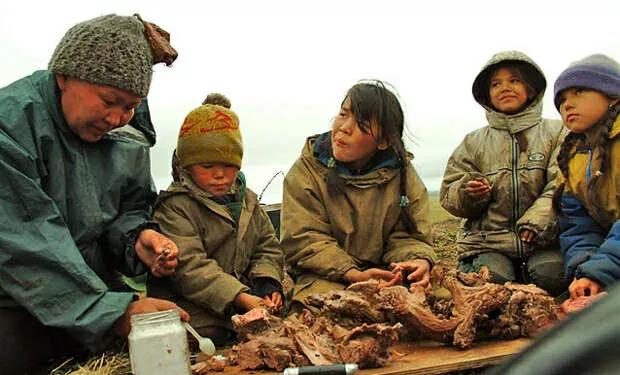In the 1970s, a MI-8 research helicopter dropped anchor on the Tamil Peninsula. Two pilots, three topographers and a local guide, a Nenets native named Savely Peresol. They ended up stranded on the Siberian tundra, without communication, food, and warm clothes. They waited for help, yet no one came for three days.
The group began to starve and survived on lemmings, mushrooms, lingonberries. Men thought they would only live a few days. At that time, Savelli suggested finding edible food in the nearby swamps, filling them up and trying to head to the nearest settlement of Hatanga.
The guides found the kopalkhen - the carcass of a deer that had drowned in a swamp in the winter, let it rot for six months, and then ate it. These "carrions" can save the lost locals: they say that if you find some kopalkhen, you are welcome. Savry did find what he was looking for: the group covered their noses at the rotting stinky meat and reluctantly began to eat it.
The next morning, kopalkhen returned in retaliation for the eater in the form of vomiting, loss of consciousness and liver pain. Savelli is the only one who is not affected by terrible symptoms. Writhing in pain all day, two pilots and a topographer died, leaving the two unconscious. Fortunately, a rescue helicopter appeared. One of the topographers was rescued from the brink of death. Unfortunately, the other one died the next night. Savelli was later tried for "accidental manslaughter by poisoning.".
Kopalkhen meat is "pickled" in winter, i.e. rotted. At that time, microorganisms appeared, gradually replenishing the decaying body with vitamins. However, corpses also produce poisons and toxins — cadaver amines, putrestinine, and neurine, which act on the body in a manner similar to poison: the unfortunate person begins to drool heavily, accompanied by vomiting, diarrhea, and convulsions, which in most cases lead to death. However, kopalkhen has no reaction to those who have been accustomed to it since childhood.
"Kopalkhen is rich in energy, as well as trace elements that are essential for many organisms. Otherwise, it's hard to imagine how a marine hunter could survive all day on a floating ice sheet in the Arctic and eat only one serving of kopalkhen – completely devoid of hunger and loss of physical strength. ”
Kopalkhen is regarded as a national specialty by the Nenets, Chukchi, Khants, Eskimos and Evenks. It can be stored in ice and swamps for years while still retaining food calories and providing many healthy elements. As for the potential threat of painful death, it can be addressed by early adaptation. The child's body produces a natural immune defense against all poisons. On top of that, the inhabitants of the Arctic Circle actually have a completely different stomach environment.
Before the arrival of late autumn ice floes, when sea lions lie at the water's edge, they are struck with sticks by the indigenous people. The skin, along with fat and meat, is exfoliated in large areas, and then the inside of each piece is flavored with a mixture of herbs and lichens, then stitched with a rope made of skin, and then rolled. Sometimes, fragments of the liver, heart, and kidneys are mixed with other components. The meat is then placed in a special permafrost pit lined with stones. Permafrost acts like "cured" meat, like a traditional freezer.
